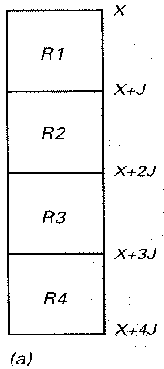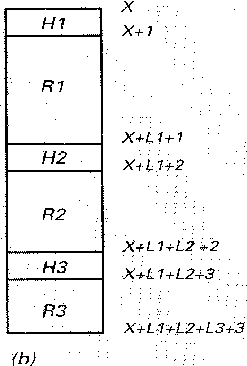

Adding information about data location in a header record improves efficiency of data storage. (A) No headers - all data records are of equal length whether full or not. (B) With headers record lengths match the amount of data.
Data Records
In all kinds of database structures, the data are written in the form of records. The simplest kind of record is a one-dimensional array of fixed length, divided into a number of equal partitions, as shown in (a). This record is ideal when all items have the same number of attributes, for example when a number of soil profiles have been sampled and analyzed for a standard range of cations.


Fixed length records are inconvenient, however, when the attributes are of variable length, and when the set of attributes measured is not common to all items. For example, not all soil profiles have the same number of horizons, and not all polygon boundaries have the same number of coordinates. In these situations variable length records are used. Each record has a 'header', an extra attribute that contains information about the type of information in the sub-record and the amount of space it takes up, shown in (b). A series of records make up a file.